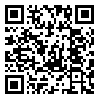Volume 11, Issue 40 (summer 2007)
jwss 2007, 11(40): 363-374 |
Back to browse issues page
Download citation:
BibTeX | RIS | EndNote | Medlars | ProCite | Reference Manager | RefWorks
Send citation to:



BibTeX | RIS | EndNote | Medlars | ProCite | Reference Manager | RefWorks
Send citation to:
F. Shariatmadari, A. A. Moghadamian. Effect of Early Feed Restriction in Combination with Intermittent LightingDuring the Natural Scotoperiod on Performance of Broiler Chicken . jwss 2007; 11 (40) :363-374
URL: http://jstnar.iut.ac.ir/article-1-711-en.html
URL: http://jstnar.iut.ac.ir/article-1-711-en.html
Abstract: (20272 Views)
The purpose of this research was to evaluate the effect of early life nutrient restriction and subsequent intermittent lighting schedule on performance in broiler. In a factorial experiment, the effect of three levels of feeding regimes and two levels of lighting schedule were investigated using 480 day-old male Hubbard chicks. The broiler chickens were randomly distributed over two rooms consisting of 4 replicates of 20 birds for each of three treatment groups. From 3 to 12 days of age treatment groups were either allowed ad-libitum access, 90% or 80% to feed. From 12 days of age until 42 days of age all birds were allowed ad-libitum access to feed. The lighting schedule for day 12 onwards in one room was a 23h light (L): 1h dark (D) lighting schedule (CL) and another room with an intermittent lighting schedule (IL, 1L:3D) from 8 AM until 8 PM . The results indicated that feed intake and feed conversion ratio of birds reared in the IL schedule were significantly lower than CL , at growth and total period of experiment (p<0.01). IL schedule did not have any significant effect on mean body weight at the end of experimental period and body weight gain at total period of experiment(p>0.05). Relative growth rate and production (PI( in the IL were higher than CL schedule (p<0.01). Feed intake and feed conversion ratio of birds given 90 and 80% of ad libitum were significantly lower in comparison with control group (p<0.01). Body weight (gain) at the end of the experiment and growth period and body weight gain in birds fed 80% of ad libitum group were significantly lower in comparison with control and 90% of ad libitum groups. At 5,6 weeks and grower period EPI and relative growth rate in birds fed 80 and 90% of ad libitum were significantly higher in comparison with control. These results indicated that feed restriction and lighting program did not have any significant effect on carcass composition (protein, fat, ash and dry matter), carcass fragment percentage (except for drumstick), abdominal fat percentage, lung , heart, right and left ventricle weight and hematocrit percentage (p>0.05), but proportion of heart weight to body weight and drumstick percentage in birds fed 80 % of ad libitum were higher than the other groups (p<0.05). Lighting schedule and feeding regime did not have any interaction effect, except for relative growth rate (p<0.05). Relative growth rate in birds with feed restriction under IL schedule was higher than birds with feed restriction under CL schedule. Intermittent lighting and feed restriction had synergic, activity effect and positive effect on body weight gain and feed convertion ratio.
| Rights and permissions | |
 |
This work is licensed under a Creative Commons Attribution-NonCommercial 4.0 International License. |





